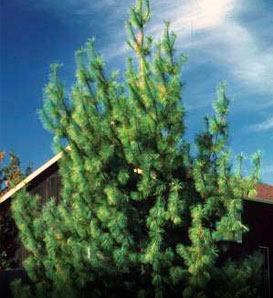I have seen gray squirrels sitting happily on the deck railing
as they ate a loblolly pine cone
the same way humans roll an ear of sweet corn in the summer.
The squirrels strip the pine cone of its inner layers,
leaving a scattering of pine cone petals around them.

But I was surprised to learn that many pine varieties
are safe for human consumption, most notably the white pine (pinus strobus).
We mainly have yellow southern / loblolly pine trees here
which don't have the distinctive long narrow pine cones of the white pine.
I'm not sure I would make a pine tree tea with our yellow pine
without doing a lot more research.

But white pine is one of Amy Jeanroy's picks for a great herbal tree
as described in her article on about.com.
Jeanroy packs the white pine's needles into a quart jar
and covers them with cider vinegar.
Then places the jar in a dark cabinet and shakes it every day for 6 weeks.
When she feels a cold coming on, Jeanroy says she makes a pine needle tea
using a few drops of the infused vinegar, honey, and hot water.
Apparently the pine needles are high in Vitamin C.
She says it is delicious, but I think it might taste a little bitter.
white pine has distinctive clusters of needles

Maybe one of these days I'll try it.
Until then, I think I'll stick to what I know.
<>
No comments:
Post a Comment